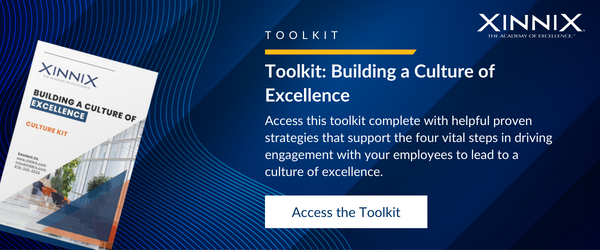“Uncertainty is the only certainty there is, and knowing how to live with insecurity is the only security.” -John Allen Paulos.
If there is one thing we have learned over the past two years, change is unavoidable. During the pandemic, so many practices that we once considered “the norm” of business fell by the wayside. Our homes became our offices, and business lunches became phone calls. Our team meetings became emails and Zoom calls.
While technology offers some solutions for working remotely, there are other challenges our computers and smartphones can’t fix so easily, considering in-person has had its challenges too. Even if we go into the office every day, energizing our teams to achieve their highest potential is not an easy feat. Leaders must be so intentional about this. As a champion of great culture, I ask every leader I talk to how the shift in working remotely challenges them. I always want to know, have they been able to not only adjust but to grow not being in the same building as their workforce every day?
At XINNIX, we dedicate ourselves to giving managers and executives the tools they need to lead well in any market or climate. Recently, I had the opportunity to sit down with Mark Sanborn—best-selling author, speaker, entrepreneur, and all-around visionary— and talk about what leadership looks like in the remote workplace. I can’t get enough of the topic of organizational culture. My conversation with Mark got me thinking about some other conversations I’ve been having with our clients over the last few years as they’ve been dealing with the challenges of a stagnating culture. They turn to me for advice because they know this is the polar opposite of the culture of energized performers we’ve built here at XINNIX. No matter how different our environment might be, we can still inspire, challenge, and energize the individuals on our teams to achieve top-performer status.
Learn to Communicate Intentionally
The immediate concern I keep hearing from managers in a work-from-home environment is communication. How can we stay connected to our teams when we don’t see them? The key is intentionality.
Mark has seen that some managers fall into the trap of overcorrecting. “They made the mistake of thinking they need to communicate more. You need to communicate better. It’s not about quantity. You want to be the kind of leader that when someone gets an email or call from you, they know that you’re not going to waste their time. That might mean imparting information or checking in to see—which I think all good sales managers do—how can I help?”
Leaders, take this opportunity to become intentional about how you communicate with your teams. If we’re only communicating through some scattershot emails and Zoom meetings, we’re not empowering our teams to stay truly focused on what they need to accomplish.
Before COVID ever hit, leaders at XINNIX began setting aside times for intentional communication called POWER meetings. This has made all the difference when it comes to our team staying energized while working remotely. Our POWER meetings set our corporate culture. It’s when team members speak to their managers about their priorities, check in on projects, and give an in-depth report on how everything is going. These meetings are non-negotiable; they are how we set a standard of explicit, thorough, focused communication and stay united as a team with the same vision and goals. By communicating more intentionally, you will completely shift your organization forward.
Let People Know They Matter
Another pain point I started hearing from leaders during COVID was that morale was slipping throughout their organizations. Whenever we don’t see each other in the office daily, we can easily forget that our teams are not just made up of performers but people. Mark Sanborn says, “We’ve got to be more attentive, not just to the fact and function, but to the feelings and emotions of people. How people feel affects how they perform, and I think too often, we check in at a performance level but not at a personal level. Find out not just how people are doing, but how they feel about what they’re doing.”
Setting aside time to maintain personal relationships is key to avoiding burnout and strengthening morale. Endless virtual meetings will leave anyone fatigued. Making time specifically in the virtual world to stay connected is so important. If you’re holding an hour meeting, leave the first ten minutes just for a chat. Find out how everybody is doing and what’s happening at home. Ask a question that lets your team members get to know each other better. These small steps will pay huge dividends to your relationship with your team.
Leaders, we must also remember that even though we may not see employees in person every day, we should never stop communicating how much we recognize and value everyone. Mark explains, “People want to be known and noticed, and they want to be appreciated. When you get to know people, that makes them valued, it’s easy to find something we want to change or do differently, but work on becoming better at appreciating the positive things that people do.”
So, as you work on intentional communication, also be intentional about communicating just how much you value your team members. You’ll be shocked by the boost you’ll see in morale and performance.
Lead Your Team to Grow
Remote work can result in complacency and stagnation if we’re not careful. When our homes become our offices, we might start to feel like we’re stuck in Groundhog Day. We wake up, plug in our laptops, get to work without physically encountering or making significant connections with our co-workers, finish up for the day, go to bed, and start all over again. This monotony is anything but energizing.
Remind your people that you are not just invested in how many phone calls they can make or how quickly they can finish a project. You are invested in who they can become. Break through the tedium by partnering with them on their future goals. If you want to energize the people you manage, give them something to work toward.
Mark says, “When you’re growing, that’ll keep you going. We must give people a chance to learn and improve continually. Help them identify what they want to learn. I think training is often relegated to the necessities and not the niceties. We all learn better when we’re learning something we want to learn.”
Leadership is never easy. It’s an incredible responsibility and privilege, and in today’s world, the pressure is higher than ever. But keep going. Be intentional. Invest in your people. Whether your team is in the office next door or in different countries, you can lead them well!



